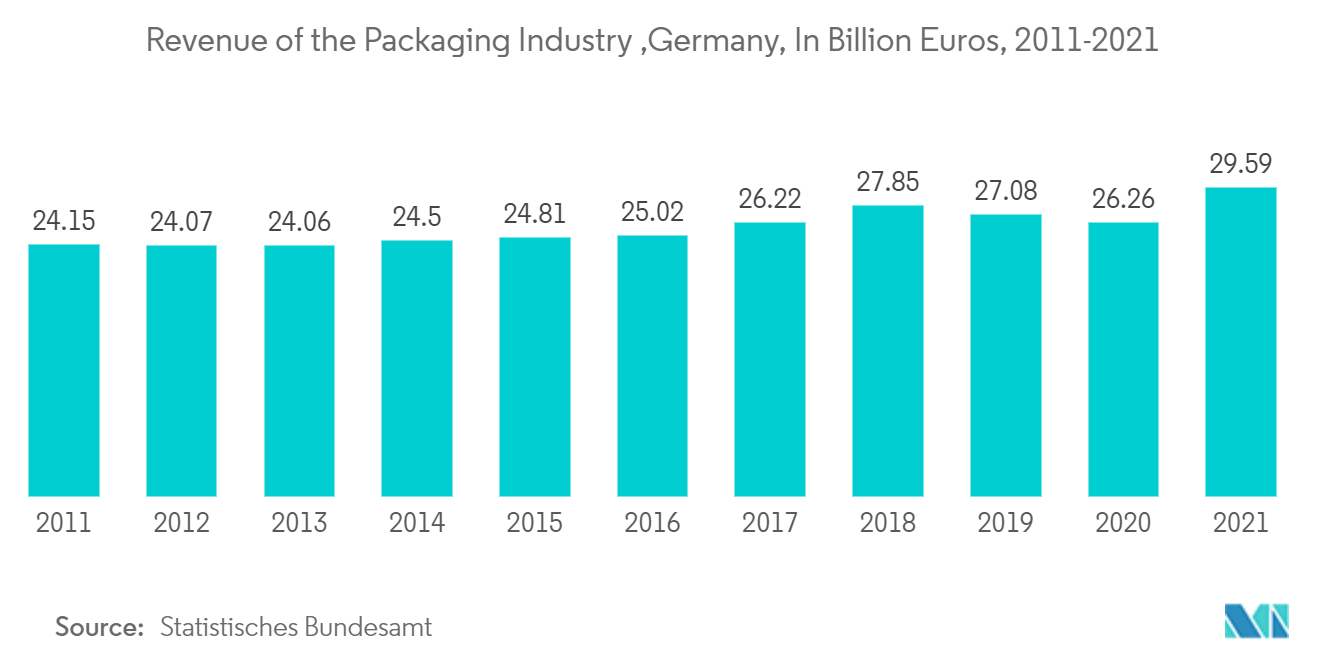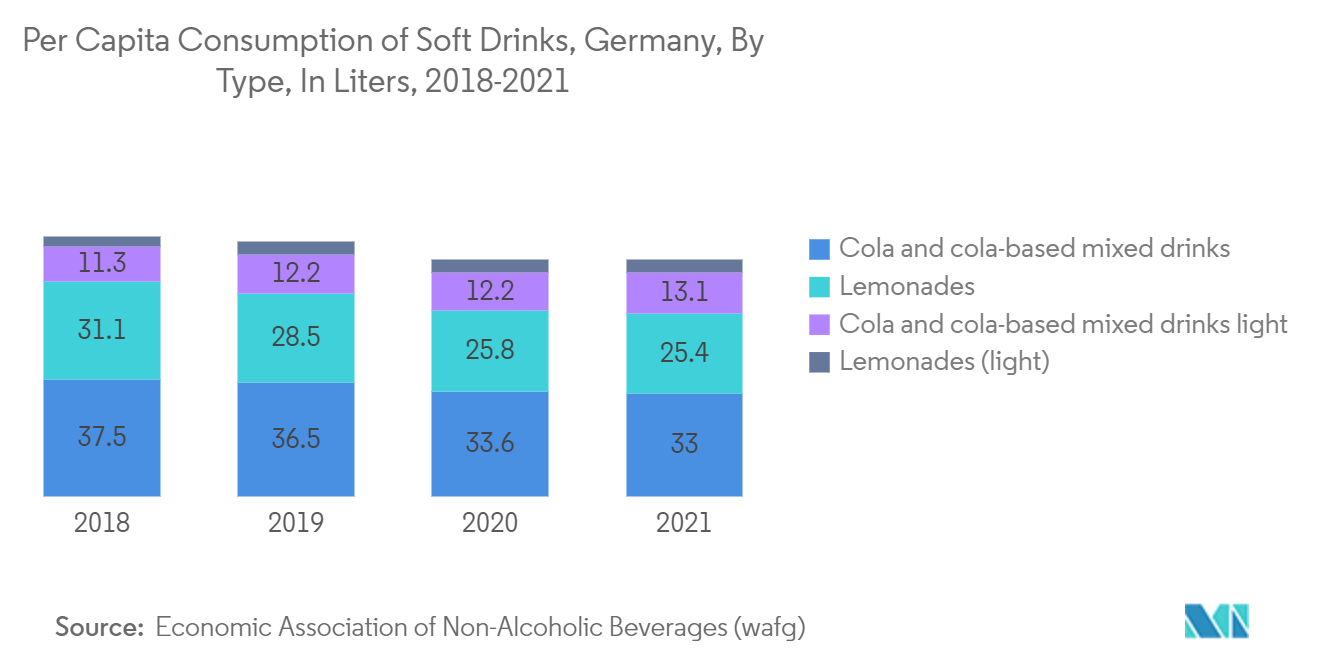Market Trends of Germany Metal Packaging Industry
This section covers the major market trends shaping the Germany Metal Packaging Market according to our research experts:
Growing Packaging Industry In Germany
- Germany's packaging business is known for its extensive use in the food industry. Consumers are increasingly looking for items that provide convenience, protection, and ease of transportation, which drives demand for rigid packaging in food, particularly dairy, meat, and ready-to-eat meals.
- Germany's metal packaging market is anticipated to grow substantially during the upcoming years owing to the rapid shift in lifestyle changes and environmental concerns. The increasing need for frozen food and beverages is also driving the market. Moreover, steel is being popularly used owing to its recyclability.
- The increase in the number of small or single-person households, the demand for convenience through on-the-go packaging and resealability, and the best-before-date recommendation enormously benefit the need for packaging materials used for products, which has boosted the packaging industry in Germany.
- However, aluminum is also gaining popularity owing to the increasing usage of aerosol packaging. Metal can packaging is the safest that protects substances from spillage and contamination due to the rising demand for metal. The growing alcoholic and non-alcoholic beverages industry is driving the market's growth.

Cans are Expected to Hold a Significant Share
- The need for convenience and portability drives metal packaging in alcoholic beverages. While portion control is making beverage brands offer smaller cans over conventional sizes, the focus on sustainability is driving categories conventionally using PET to use metal can packaging. Also, metal packaging in non-alcoholic beverages is primarily driven by its convenience features, such as small size and eye-catching pack designs to draw consumers' attention.
- Various metals like aluminum, tin plate, tin-free steel, stainless steel, and metal-based packaging material in rigid and semi-rigid forms such as cans, foil wraps, and retort pouches are most commonly used for food packaging applications. A healthy product packaged in an unsustainable packaging option is unlikely to appeal to a large swathe of consumers, so metal continues to be the go-to option, given its ability to more than tick the sustainability box.
- Many new categories utilize metal packaging, with its versatility in terms of forms and sizes. Some of these new products are transforming the landscape as great alternatives for health-conscious consumers. From flavored and enhanced waters to natural tonics, alcohol-free beers, and Ready-to-Drink products (RTD) - all are gaining a foothold.
- The beverage market was continuing to evolve and accelerated due to the COVID pandemic. The industry looked considerably different, with new and exciting drinks concepts breaking through with increasing levels of success - provided they meet the stringent criteria of today's more well-informed consumer base.
- The beverage sector continues to expand and diversify through new and exciting sub-categories. Brands looking to strike the perfect balance in packaging continue to select metal as the best all-around solution. Knowledgeable consumers are demanding far more than simply great-tasting beverages; metal packaging's ability to deliver effortless sustainability, design flexibility, and on-the-go convenience chimes well with the 21st-Century lifestyle. Due to rising demand for healthy beverages, carbonated soft drinks, and fruit and vegetable juices, Germany is projected to impact the metal cans in the market positively.


